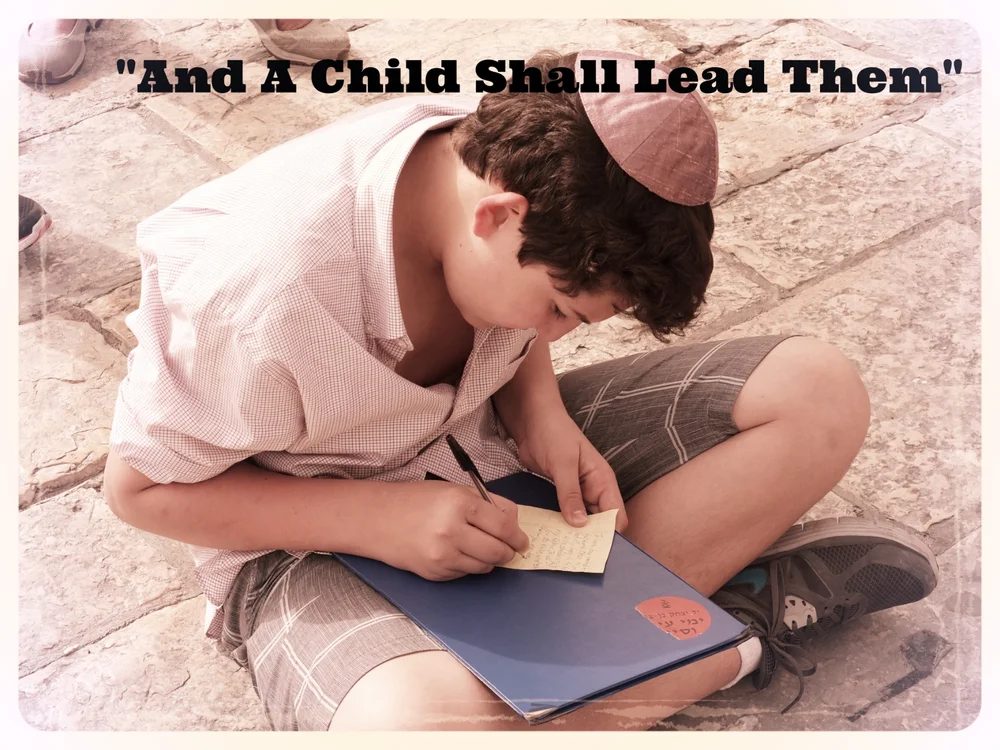Yom Kippur - Discussion Qs & Quiz!
Click on this word -- QUIZ -- to test your knowledge of YK basics!
Rabbi David Ingber says that on Yom Kippur, we're asking God not to judge us but to show compassion for us. Do you understand what Ingber means?
Why do you think Jewish teaching says we have to ask forgiveness three times before we can stop asking?
The only sins forgiven on Yom Kippur are sins against God. When it comes to sins against other people, we have to seek forgiveness from the person we offended. (Mishna Yoma 8:9) Why can't God just forgive us for those sins, too?
*The sins we list in the "Al Chet" prayer are confessed in the PLURAL. Why do you think we're confessing for more than ourselves?
* Explain the Unetanetokef Prayer that’s recited on Yom Kippur: Why do you think we’re able to get absolved from sins we haven’t yet committed?
* Even though Yom Kippur is a somber holiday, the Talmud regards it as a happy day because by the end, we’re supposed to have experienced some kind of catharsis -- made peace with everyone we know and with God. Do you think there's a joy or serenity that comes from atonement and apology?
* Originally, the annulment of vows was performed on Rosh Hashanah, the New Year, ten days before Yom Kippur. The Talmud (Nedarim 23b) says, "Who wished to cancel his vows of a whole year should arise on Rosh Hashanah and announce, 'All vows that I will pledge in the coming year shall be annulled.'"… It is believed that Kol Nidrei was added to the liturgy of Yom Kippur because that service is much more solemn, because the Day of atonement is entirely attuned to the theme of repentance and remorse, and because (despite the great importance of Rosh Hashana) Yom Kippur services are better attended.
Passover
*Every ritual at the seder was invented to keep the children awake and interested. Why do you think it's important that the children stay engaged?
*Originally, the seder meal was eaten first – before the seder itself, but the rabbis switched the order. Why do you think? [To keep the children interested.]
THE COMMANDMENT IN EXODUS IS TO “TELL YOUR CHILDREN”.... (Exodus 13:8)
*Rabbi Jonathan Sacks writes, “Teach your children the history of freedom if you want them never to lose it.” What do you think he meant?
* What do we do at the seder to signal our discomfort with the killing of Egyptians? (Hint: it has to do with wine and your plate.)
*Why are we supposed to set a beautiful table? (Why do the rabbis say that nice dishes and napkins represent freedom?)
*MOST PEOPLE WANT TO FORGET THE BAD THINGS THAT HAPPEN TO THEM IN THEIR LIVES. WHY DO JEWS CHOOSE TO RE-LIVE SLAVERY EVERY YEAR?
*We don’t read the Passover story to ourselves – We read it out loud with our families. Why do you think it’s important to read it out loud instead of privately?
* How is matzoh both the symbol of slavery ("the bread of affliction") and also of freedom (Deliverance)?
* In Roman times – when the Hebrew Bible was actually written, the servants and slaves had to stand while their masters ate dinner. So how does that explain why we “recline” – or sit back tonight?
*Rabbi Irwin Kula said “It was easier to take the people out of Egypt, than to take Egypt out of the people.”
CHANUKAH / HANUKKAH
Click on these CHANUKAH FLASHCARDS to test your knowledge of the holiday!
* Explain how Chanukah ended up becoming so important in the Jewish calendar when it isn't even in the Torah?
* Why don't we tell the real ending of the Chanukah story to kids?
Holiday Projects: ideas
Make your own honey dish for Rosh Hashanah!
Click on these: INSTRUCTIONS
OR FOLLOW THESE: INSTRUCTIONS
___________________
Write a new verse to "Dayenu." What else would have been "enough"? Put your class's new verses together and sing.
____________________
Make your own Afikomen bag! Click on: instructions
____________________
Create a collage that illustrates all of the contradictions contained in the seder:
* Sweet haroset versus bitter herb
* Shank bone (death) versus egg (life)
* Slavery vs freedom
* Despair vs hope
* Narrow space (mitzrayim) versus open desert (wandering)
_____________________
Choreograph a short dance that teaches us the correct choreography for the lulav and etrog ceremony?
Instructions are: HERE
ROSH HASHANAH
* The Torah portion we read every single Rosh Hashanah is The Akedah: The Binding of Isaac
* The connection between The Akedah story and the New Year, is that Abraham killed a ram instead of his son, Isaac, after the angels stopped him from sacrificing his son, and on Rosh Hashnah we blow the ram's horn (the shofar).
* Rosh Hashanah is never mentioned in the Torah
* The Days between Rosh Hashanah and Yom Kippur are called "The Twelve Days of Awe"
* Watch an animated version of Jonah and the Whale, which we read in the haftarah on Yom Kippur afternoon.
*Watch the Maccabeats sing "Book of Good Life" about Yom Kippur








